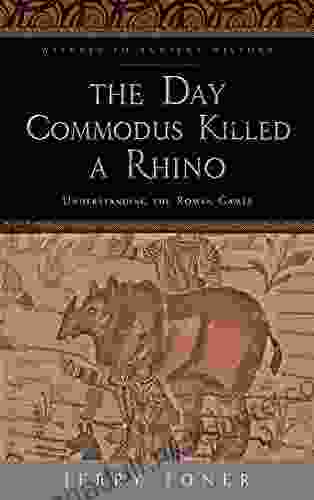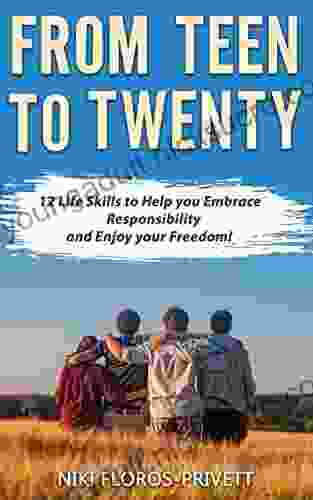Witnessing Ancient History: A Comprehensive Guide to the Roman Games

The Roman Games, also known as the Ludi Romani, were a series of public festivals held throughout the year in ancient Rome. These grandiose spectacles were more than just entertainment; they were deeply intertwined with Roman culture, religion, and politics. They provided a platform for social cohesion, celebrated military victories, and honored the gods. Through these games, the Romans expressed their passions, showcased their ingenuity, and left an enduring legacy that continues to fascinate us today.
4.4 out of 5
| Language | : | English |
| File size | : | 2120 KB |
| Text-to-Speech | : | Enabled |
| Screen Reader | : | Supported |
| Enhanced typesetting | : | Enabled |
| Word Wise | : | Enabled |
| Print length | : | 146 pages |
Origins and Evolution
The origins of the Roman Games can be traced back to the early Etruscan civilization. The Romans adopted and adapted these festivals, gradually incorporating them into their own cultural and religious practices. Initially, the games were primarily religious ceremonies, held to honor specific deities and ensure divine favor. Over time, they evolved into more elaborate and diverse spectacles, incorporating elements of entertainment, sport, and political propaganda.
The most famous and influential Roman Games were the Ludi Romani, first held in 509 BC. These games were dedicated to Jupiter, the king of the gods, and celebrated the establishment of the Roman Republic. The Ludi Romani became a major event in the Roman calendar, lasting for several days and featuring a wide range of competitions, including chariot races, athletic contests, and gladiatorial battles.
Types of Games
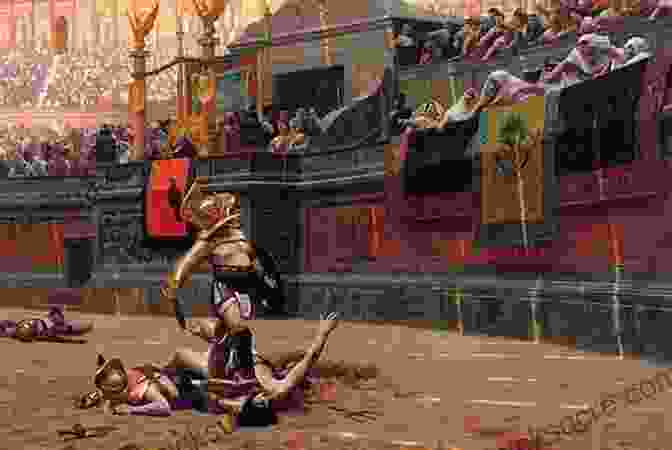
The Roman Games encompassed a vast array of activities, each with its unique characteristics and significance:
- Chariot races were a thrilling and dangerous sport, often involving teams of four horses. The races took place in the Circus Maximus, a vast arena that could accommodate hundreds of thousands of spectators.
- Athletic contests showcased the physical prowess and skill of athletes from across the Roman Empire. These contests included running, jumping, wrestling, and boxing.
- Gladiatorial battles were a brutal and controversial form of entertainment. Gladiators, often prisoners of war or condemned criminals, fought to the death or entertained the crowd with mock battles.
- Naumachiae were mock naval battles, staged in flooded arenas or amphitheaters. These spectacles simulated real-life naval warfare and involved elaborate sets and hundreds of participants.
- Venationes were animal hunts, featuring exotic beasts brought from distant lands. The hunts provided an opportunity for the Romans to showcase their dominance over the natural world.
Venues and Architecture
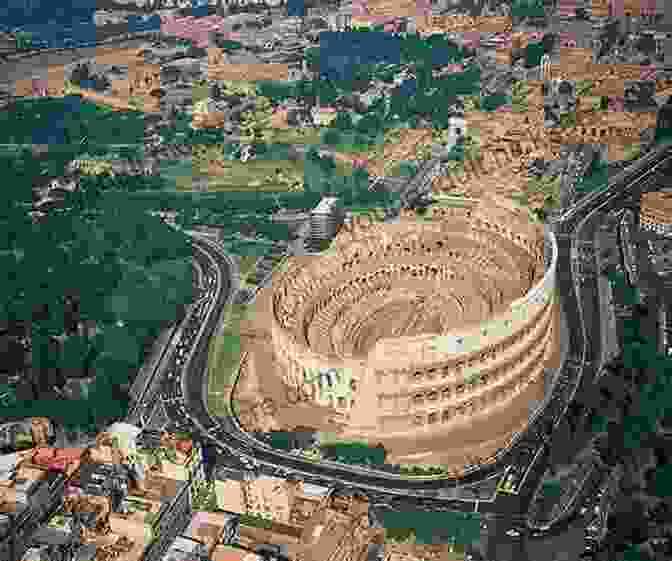
The Roman Games were held in a variety of venues, each designed to accommodate the specific needs of the event. The most famous venue was the Colosseum, an immense amphitheater that could hold up to 80,000 spectators. The Colosseum was primarily used for gladiatorial battles and other forms of combat entertainment.
Other notable venues included the Circus Maximus, the largest chariot-racing track in Rome, and the Circus Flaminius, a stadium used for athletic contests. Amphitheaters and theaters were also constructed throughout the Empire, providing a diverse range of spaces for entertainment and spectacle.
Social and Cultural Impact
The Roman Games played a significant role in Roman society and culture. They provided a shared experience that transcended social and economic barriers. During the games, the citizens of Rome came together as a community, celebrating their shared heritage and expressing their pride in their city.
The games also served as a platform for political propaganda. Emperors and politicians used the games to promote their achievements, gain popular support, and distract the population from social and economic problems. The games became a tool for controlling the masses and reinforcing the authority of the ruling elite.
Moral and Ethical Debates
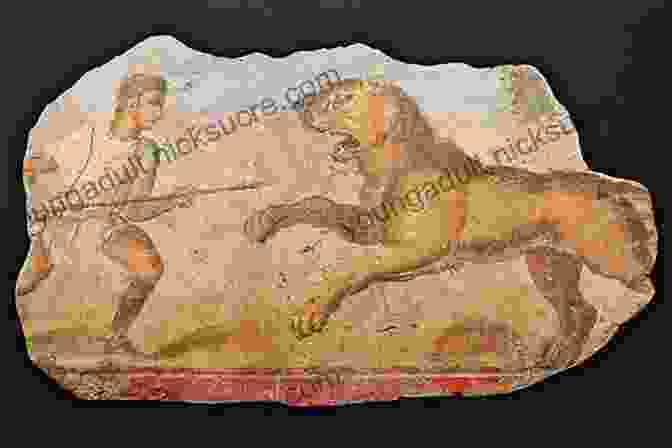
The Roman Games have been a subject of debate and controversy throughout history. Some aspects of the games, particularly gladiatorial battles and animal hunts, have been criticized for their cruelty and brutality. The use of human beings as entertainment has raised ethical questions about the value of life and the limits of human exploitation.
Even in ancient times, there were critics who questioned the morality of the games. The philosopher Seneca condemned gladiatorial battles as "a disgrace to mankind" and a "school of cruelty." The writer Plutarch argued that venationes were "a barbarous and uncivilized spectacle." Despite these criticisms, the Roman Games continued to be popular for centuries, reflecting the complex and often contradictory nature of Roman society.
Legacy and Influence
The Roman Games left an enduring legacy that continues to shape entertainment and spectacle to this day. The concept of public spectacles as a form of mass entertainment has been adopted by cultures around the world. Modern sporting events, such as the Olympics and the World Cup, can be seen as inheritors of the Roman Games tradition.
The Roman Games have also inspired countless works of art, literature, and music. Paintings, sculptures, and mosaics depict scenes from the games, capturing the excitement and brutality of these ancient spectacles. Writers and poets have used the games as a backdrop for their stories, exploring themes of courage, violence, and the human condition.
The Roman Games were a pivotal aspect of ancient Roman civilization. They were more than just entertainment; they were a reflection of Roman values, beliefs, and aspirations. Through these games, the Romans celebrated their gods, showcased their military prowess, and expressed their passion for spectacle and competition. The Roman Games continue to captivate and fascinate us today, providing a glimpse into the vibrant and complex world of ancient Rome.
4.4 out of 5
| Language | : | English |
| File size | : | 2120 KB |
| Text-to-Speech | : | Enabled |
| Screen Reader | : | Supported |
| Enhanced typesetting | : | Enabled |
| Word Wise | : | Enabled |
| Print length | : | 146 pages |
Do you want to contribute by writing guest posts on this blog?
Please contact us and send us a resume of previous articles that you have written.
 Fiction
Fiction Non Fiction
Non Fiction Romance
Romance Mystery
Mystery Thriller
Thriller SciFi
SciFi Fantasy
Fantasy Horror
Horror Biography
Biography Selfhelp
Selfhelp Business
Business History
History Classics
Classics Poetry
Poetry Childrens
Childrens Young Adult
Young Adult Educational
Educational Cooking
Cooking Travel
Travel Lifestyle
Lifestyle Spirituality
Spirituality Health
Health Fitness
Fitness Technology
Technology Science
Science Arts
Arts Crafts
Crafts DIY
DIY Gardening
Gardening Petcare
Petcare Mometrix
Mometrix Jeremy Klaff
Jeremy Klaff Angela C Wu
Angela C Wu Kristen S Kurland
Kristen S Kurland Jonathan Gottschall
Jonathan Gottschall John Samuel Barnett
John Samuel Barnett Jeffrey Bernstein
Jeffrey Bernstein Walter Beede
Walter Beede Christian Wiggins
Christian Wiggins Joe Peta
Joe Peta Andy Crowe
Andy Crowe Ken Dryden
Ken Dryden Kent David Kelly
Kent David Kelly Scott Meyer
Scott Meyer Robin Yocum
Robin Yocum Stephen Cheney
Stephen Cheney Angel Burns
Angel Burns Jonah Lehrer
Jonah Lehrer Robert Zubek
Robert Zubek Tim Hannigan
Tim Hannigan Viviana Altuve
Viviana Altuve Jenna Blough
Jenna Blough Tea Rozman Clark
Tea Rozman Clark George Johnson
George Johnson Dave Smith
Dave Smith Angela Eckhoff
Angela Eckhoff Karen Sternheimer
Karen Sternheimer Mark Verstegen
Mark Verstegen Stephen Jungmann
Stephen Jungmann Richard Lee Byers
Richard Lee Byers Bob Swope
Bob Swope Serena B Miller
Serena B Miller Warren Sande
Warren Sande Judea Pearl
Judea Pearl Lin Wellford
Lin Wellford Mitch Horowitz
Mitch Horowitz William D Lopez
William D Lopez Gillian Price
Gillian Price Angela Thayer
Angela Thayer Robyn Harding
Robyn Harding Kat Anderson
Kat Anderson William Ayers
William Ayers Liv Ryan
Liv Ryan Margaret Visser
Margaret Visser Angelo Lowery
Angelo Lowery Judith S Beck
Judith S Beck Irene Gut Opdyke
Irene Gut Opdyke Robin Ray Green
Robin Ray Green Stephen Rea
Stephen Rea Dhonielle Clayton
Dhonielle Clayton Tovah Feldshuh
Tovah Feldshuh Avinash Navlani
Avinash Navlani Richard Hibshman
Richard Hibshman Jim Prime
Jim Prime Mary Pipher
Mary Pipher Neveen Musa
Neveen Musa Richard A Muller
Richard A Muller Joseph Phillips
Joseph Phillips Richard G Brown
Richard G Brown Bradley T Erford
Bradley T Erford Eric Schmitz
Eric Schmitz Michael Tomasello
Michael Tomasello Tom Allen
Tom Allen Gregory J Davenport
Gregory J Davenport Andy Dowsett
Andy Dowsett Joseph Mazur
Joseph Mazur Dwight E Neuenschwander
Dwight E Neuenschwander Johnson Egonmwan
Johnson Egonmwan Rafael Gordillo Naranjo
Rafael Gordillo Naranjo Lois A Ritter
Lois A Ritter Jenny Smith
Jenny Smith Marc Charles
Marc Charles Andy Farrell
Andy Farrell Jennifer Bohnet
Jennifer Bohnet Louis Martin
Louis Martin Joyce Yang
Joyce Yang Dr Eva Beaulieu
Dr Eva Beaulieu Germano Dalcielo
Germano Dalcielo Phil Burt
Phil Burt Kim West
Kim West Gerard Siggins
Gerard Siggins Jay Griffiths
Jay Griffiths Tj Faultz
Tj Faultz John C Maxwell
John C Maxwell Nicholas Jubber
Nicholas Jubber Joe Berardi
Joe Berardi Lynn Palm
Lynn Palm Sam Fury
Sam Fury Diana Nyad
Diana Nyad Nikki Ace
Nikki Ace Forrest Maready
Forrest Maready Leanne Ely
Leanne Ely Richard Lemaster
Richard Lemaster Emma Dalton
Emma Dalton Jorge Ramos Mizael
Jorge Ramos Mizael Eli Wilson
Eli Wilson Peter Gibson
Peter Gibson Matt Vincent
Matt Vincent Janet Menzies
Janet Menzies Robert Urban
Robert Urban Andy Puddicombe
Andy Puddicombe Nick Bradley
Nick Bradley Troy A Hill
Troy A Hill Baby Professor
Baby Professor Keith Elliot Greenberg
Keith Elliot Greenberg Jessica Nordell
Jessica Nordell Kelly Corrigan
Kelly Corrigan Erich Fromm
Erich Fromm Ray Walker
Ray Walker Jeffrey T Richelson
Jeffrey T Richelson Kenneth R Ginsburg
Kenneth R Ginsburg Lynn Lyons
Lynn Lyons Howard Davis
Howard Davis Cate Tiernan
Cate Tiernan D M Davis
D M Davis Andy Jurinko
Andy Jurinko Kevin J Gaston
Kevin J Gaston Latonya J Trotter
Latonya J Trotter Aaron Wilson
Aaron Wilson Angela Leslee
Angela Leslee Emily Souder
Emily Souder Cheryl Alkon
Cheryl Alkon Daddilife Books
Daddilife Books Ben Campbell
Ben Campbell Rebecca Solnit
Rebecca Solnit Carlos Acevedo
Carlos Acevedo Shreya Ramachandran
Shreya Ramachandran Mark Rosenman
Mark Rosenman Kevin Hunter
Kevin Hunter Judith Hoare
Judith Hoare Sharon Strand Ellison
Sharon Strand Ellison Cynthia Nims
Cynthia Nims Ingrid S Clay
Ingrid S Clay Guy Evans
Guy Evans Stefan Hunziker
Stefan Hunziker Rod Powers
Rod Powers Ryan Beck
Ryan Beck Chris Chelios
Chris Chelios Samuel B Green
Samuel B Green Rebecca Eanes
Rebecca Eanes John B Nici
John B Nici Marilyn Burgos
Marilyn Burgos Michele Borba
Michele Borba Eliot Schrefer
Eliot Schrefer Linda Sivertsen
Linda Sivertsen Kim Dragoner
Kim Dragoner Lisa Marie Mercer
Lisa Marie Mercer Jason Hogan
Jason Hogan Afra J Zomorodian
Afra J Zomorodian Emily Nielson
Emily Nielson Ron Jeffries
Ron Jeffries Joan Jacobs Brumberg
Joan Jacobs Brumberg Jodi Shabazz
Jodi Shabazz Tara Sim
Tara Sim Tristan Higbee
Tristan Higbee T R Fehrenbach
T R Fehrenbach Nathaniel Rich
Nathaniel Rich Jeff Mach
Jeff Mach Manik Joshi
Manik Joshi Jeanne Godfrey
Jeanne Godfrey Dan Heath
Dan Heath David E Jones
David E Jones Patrick Pickens
Patrick Pickens Kevin Thomas
Kevin Thomas Laura Hillman
Laura Hillman Katrina Cope
Katrina Cope Massimo Florio
Massimo Florio Mark W Steege
Mark W Steege Meg Long
Meg Long Andy Peloquin
Andy Peloquin Humberto G Garcia
Humberto G Garcia Chanel Craft Tanner
Chanel Craft Tanner Jodi Picoult
Jodi Picoult Lutz Hanseroth
Lutz Hanseroth K Moriyasu
K Moriyasu Karen Elliott House
Karen Elliott House Margaret M Quinlan
Margaret M Quinlan Mark Kernion
Mark Kernion Kari Marie Norgaard
Kari Marie Norgaard John Geiger
John Geiger Chef Maggie Chow
Chef Maggie Chow Wayne Mcghie
Wayne Mcghie Stephen Grossberg
Stephen Grossberg Bradley Charbonneau
Bradley Charbonneau Carlo Rovelli
Carlo Rovelli Lawrence Goldstone
Lawrence Goldstone Bob Gordon
Bob Gordon Belinda Norton
Belinda Norton Derek M Steinbacher
Derek M Steinbacher Rob Willson
Rob Willson Sam Bleakley
Sam Bleakley Mark Wells
Mark Wells Mark Synnott
Mark Synnott Greg Prato
Greg Prato W Todd Woodard
W Todd Woodard Tina Nelson
Tina Nelson Tigran Bagdasaryan
Tigran Bagdasaryan David Goodman
David Goodman Muako Maepa
Muako Maepa Adam Skolnick
Adam Skolnick Sylvester Nemes
Sylvester Nemes Neil Hawkesford
Neil Hawkesford S L Macgregor Mathers
S L Macgregor Mathers Yuu Tanaka
Yuu Tanaka Jon Ronson
Jon Ronson Kathy Freston
Kathy Freston Hourly History
Hourly History Mirabai Starr
Mirabai Starr Jo May
Jo May Angelo Tropea
Angelo Tropea Margaret Jordan Halter
Margaret Jordan Halter United States Government Us Army
United States Government Us Army Dan Ariely
Dan Ariely Warren St John
Warren St John Lindsay Ford
Lindsay Ford Jordan Summers
Jordan Summers Richard Bate
Richard Bate Jay Matthews
Jay Matthews Robert Kirk
Robert Kirk Tanya Lee Stone
Tanya Lee Stone Jane M Healy
Jane M Healy Keylee C Hargis
Keylee C Hargis Christopher Nyerges
Christopher Nyerges Israelin Shockness
Israelin Shockness Angelo Chiari
Angelo Chiari Lucy Postgate
Lucy Postgate Rebecca Hemmings
Rebecca Hemmings Karl Beecher
Karl Beecher Mark J Musser
Mark J Musser Barak Ariel
Barak Ariel Scott Stillman
Scott Stillman Michael V Uschan
Michael V Uschan Angeline Boulley
Angeline Boulley Tim Larkin
Tim Larkin James M Johnston
James M Johnston Michael Driscoll
Michael Driscoll Dennis Rainey
Dennis Rainey Roger Craig
Roger Craig Tim Thayne
Tim Thayne Bret A Moore
Bret A Moore Bob Clouser
Bob Clouser Kyle Graves
Kyle Graves Rodney Paul
Rodney Paul Howell Raines
Howell Raines Rebecca P Cohen
Rebecca P Cohen Capn Fatty Goodlander
Capn Fatty Goodlander Harold S Koplewicz
Harold S Koplewicz Caspar Melville
Caspar Melville Lidia Bastianich
Lidia Bastianich Ashley Rickards
Ashley Rickards Robert Lindsay
Robert Lindsay Bill Schneider
Bill Schneider Ariel Henley
Ariel Henley Ellen Frank
Ellen Frank Mercedes Pollmeier
Mercedes Pollmeier Rachel Hutt Phd
Rachel Hutt Phd Madeleine Roux
Madeleine Roux Eugene P Northrop
Eugene P Northrop Peter Townsend
Peter Townsend Robert Dudley
Robert Dudley J D Swanson
J D Swanson Catherine Mccord
Catherine Mccord Andy Mitchell
Andy Mitchell Connie Schultz
Connie Schultz Angela Stancar Johnson
Angela Stancar Johnson Cory Mortensen
Cory Mortensen Nicole Smith
Nicole Smith Paul Cobley
Paul Cobley Elly Molina
Elly Molina Devaki Lakshmi
Devaki Lakshmi Jessica Wolstenholm
Jessica Wolstenholm Chip Heath
Chip Heath Jules Brown
Jules Brown Christopher O Kennon
Christopher O Kennon Martin Volken
Martin Volken Pete Dunne
Pete Dunne Donna Helen Crisp Jd Msn Rn Pmhcns Bc
Donna Helen Crisp Jd Msn Rn Pmhcns Bc Elizabeth Foss
Elizabeth Foss Diana Winston
Diana Winston Daniel Friedmann
Daniel Friedmann Jeffrey Thurston
Jeffrey Thurston Tirzah Price
Tirzah Price Alessio Mangoni
Alessio Mangoni Douglas Henderson Jr
Douglas Henderson Jr Sir Edmund Hillary
Sir Edmund Hillary Ryan Bow
Ryan Bow Caryl Say
Caryl Say Rachel Connelly
Rachel Connelly Robyn Ryle
Robyn Ryle Otto Rahn
Otto Rahn Pete Sampras
Pete Sampras Sabbithry Persad Mba
Sabbithry Persad Mba George Megre
George Megre Angela Smith
Angela Smith Seth Lloyd
Seth Lloyd Kate Le Roux
Kate Le Roux Lee Cronk
Lee Cronk George Noory
George Noory George E Hein
George E Hein Teresa Parker
Teresa Parker William Bryant Logan
William Bryant Logan Chuck Weikert
Chuck Weikert Milton Roth
Milton Roth Tiara Mcclure
Tiara Mcclure Thais Nye Derich
Thais Nye Derich Kristen Jervis Cacka
Kristen Jervis Cacka Danil Zburivsky
Danil Zburivsky Donald N Yates
Donald N Yates Andy Schell
Andy Schell Tim Macwelch
Tim Macwelch Nicholas Epley
Nicholas Epley Andrea Lankford
Andrea Lankford Stuart Lawrence
Stuart Lawrence G K Derosa
G K Derosa Wendy Rosenoff
Wendy Rosenoff Ashley P Martin
Ashley P Martin Donald R Prothero
Donald R Prothero Rawdon Wyatt
Rawdon Wyatt Beth A Leonard
Beth A Leonard Richard L Sites
Richard L Sites Tim O Connor
Tim O Connor Schoolhouse Heaven
Schoolhouse Heaven Sandra Steingraber
Sandra Steingraber Steve Hindman
Steve Hindman Jeffrey Lee
Jeffrey Lee Dean Beaumont
Dean Beaumont Mandee Heller Adler
Mandee Heller Adler Wynne Foster
Wynne Foster Rodney Castleden
Rodney Castleden Lisa Preston
Lisa Preston David Kinney
David Kinney Alberta Hawse
Alberta Hawse T L Payne
T L Payne Marie Brennan
Marie Brennan Cap N Fatty Goodlander
Cap N Fatty Goodlander James Quinn
James Quinn Samir P Desai
Samir P Desai William E Hearn
William E Hearn L S Boos
L S Boos Jessica Jung
Jessica Jung Mike Chambers
Mike Chambers Hajime Isayama
Hajime Isayama Stephen Lynch
Stephen Lynch Angel Millar
Angel Millar Susan Burton
Susan Burton Donna Mott
Donna Mott Florian Freistetter
Florian Freistetter Charlotte Klaar Phd
Charlotte Klaar Phd Ellen J Langer
Ellen J Langer Ryan D Agostino
Ryan D Agostino Elizabeth Kaledin
Elizabeth Kaledin Jim Saccomano
Jim Saccomano Stacy Mccullough
Stacy Mccullough Frank Deford
Frank Deford Patrick Ejeke
Patrick Ejeke Jim Posewitz
Jim Posewitz Kristina Statler
Kristina Statler Tom Chatfield
Tom Chatfield Miles Olson
Miles Olson Dave Duncan
Dave Duncan Stewart Shapiro
Stewart Shapiro Robb Manning
Robb Manning Angelina J Steffort
Angelina J Steffort Brian Cain
Brian Cain Johnny Molloy
Johnny Molloy Jeff Fleischer
Jeff Fleischer Shenila Khoja Moolji
Shenila Khoja Moolji Shane O Mara
Shane O Mara Harry Fairhead
Harry Fairhead Marie Myung Ok Lee
Marie Myung Ok Lee Raynor Winn
Raynor Winn Ed Stafford
Ed Stafford Shalabh Aggarwal
Shalabh Aggarwal Kim Foley Mackinnon
Kim Foley Mackinnon Mtg Editorial Board
Mtg Editorial Board Thomas Gilovich
Thomas Gilovich Patrick M Lencioni
Patrick M Lencioni Ted Sandling
Ted Sandling Rick Vaive
Rick Vaive Miranda Green
Miranda Green Barry Pickthall
Barry Pickthall Bernd Heinrich
Bernd Heinrich Jerry Toner
Jerry Toner Michael Anthony
Michael Anthony Tania N Shah
Tania N Shah Rebecca Serle
Rebecca Serle Gary B Meisner
Gary B Meisner Julia Reed
Julia Reed Mark Shepherd
Mark Shepherd Jamie Kuykendall
Jamie Kuykendall Stefanie K Johnson
Stefanie K Johnson Deborah Wall
Deborah Wall Tom Dymond
Tom Dymond Siena Cherson Siegel
Siena Cherson Siegel Keith Crowley
Keith Crowley Scott Alan Johnston
Scott Alan Johnston Fredrik Backman
Fredrik Backman David Graeber
David Graeber Third Edition Kindle Edition
Third Edition Kindle Edition Petros Efthymiou
Petros Efthymiou Rufus Estes
Rufus Estes Elizabeth Hunter
Elizabeth Hunter M J Fievre
M J Fievre Mark Remy
Mark Remy Matthew D Dewar
Matthew D Dewar Mark Lester
Mark Lester Christina Reese
Christina Reese Chris Santella
Chris Santella Joshua Clark
Joshua Clark Violet White
Violet White Arlin Smith
Arlin Smith Robyn Wideman
Robyn Wideman Joy Williams
Joy Williams Kathy Hoopmann
Kathy Hoopmann Scott Turner
Scott Turner Tovar Cerulli
Tovar Cerulli Ben Ehrenreich
Ben Ehrenreich Alex Wolf
Alex Wolf Jenna Helwig
Jenna Helwig David Herres
David Herres Yvonne Choquet Bruhat
Yvonne Choquet Bruhat Dawn Griffiths
Dawn Griffiths Rebecca Boggs Roberts
Rebecca Boggs Roberts Murtaza Haider
Murtaza Haider Carol Ann Gillespie
Carol Ann Gillespie Ruby Lang
Ruby Lang Karl E Peace
Karl E Peace Frederick Aardema
Frederick Aardema Roland A Boucher
Roland A Boucher Rashaun Johnson
Rashaun Johnson Madison Lee
Madison Lee Joel J Lerner
Joel J Lerner Anna Rashbrook
Anna Rashbrook Nicholas D Kristof
Nicholas D Kristof Charney Herst
Charney Herst R E Burrillo
R E Burrillo Peter Finch
Peter Finch Ben Bleiweiss
Ben Bleiweiss Colby Coombs
Colby Coombs Christina Hillsberg
Christina Hillsberg John Sonmez
John Sonmez Andy Tyson
Andy Tyson Robin Benway
Robin Benway Christian Heath
Christian Heath Laura Bogen
Laura Bogen Natalie Rhodes
Natalie Rhodes Ron Douglas
Ron Douglas Kathryn Miles
Kathryn Miles Stephanie Land
Stephanie Land Erin Moulton
Erin Moulton Ruth Benedict
Ruth Benedict Dave Gray
Dave Gray Oliver Burkeman
Oliver Burkeman David C Keehn
David C Keehn Rachel Kowert
Rachel Kowert Leonard Lueras
Leonard Lueras Robert E Stake
Robert E Stake Rosie Daley
Rosie Daley Emiko Jean
Emiko Jean Sandy Tolan
Sandy Tolan Thomas Golf
Thomas Golf
Light bulbAdvertise smarter! Our strategic ad space ensures maximum exposure. Reserve your spot today!

 Jared NelsonIntermediate Accounting QuickStudy Digital Reference Guide: A Comprehensive...
Jared NelsonIntermediate Accounting QuickStudy Digital Reference Guide: A Comprehensive...
 Daniel KnightBecoming Human Theory of Ontogeny: Unveiling the Secrets of Human Development
Daniel KnightBecoming Human Theory of Ontogeny: Unveiling the Secrets of Human Development David PetersonFollow ·4.3k
David PetersonFollow ·4.3k Elton HayesFollow ·8.5k
Elton HayesFollow ·8.5k Salman RushdieFollow ·14.5k
Salman RushdieFollow ·14.5k Pat MitchellFollow ·13.3k
Pat MitchellFollow ·13.3k Anton ChekhovFollow ·8.8k
Anton ChekhovFollow ·8.8k Gil TurnerFollow ·10k
Gil TurnerFollow ·10k Clarence MitchellFollow ·7.8k
Clarence MitchellFollow ·7.8k Benjamin StoneFollow ·11.5k
Benjamin StoneFollow ·11.5k

 Devon Mitchell
Devon MitchellDelve into the Comprehensive World of Cartridges: A...
In the realm of firearms, cartridges stand...

 Joseph Conrad
Joseph ConradTales From The San Francisco 49ers Sideline: A Look...
The San Francisco 49ers are one of the most...

 Ervin Bell
Ervin BellArcGIS Desktop 10: A Comprehensive GIS Tutorial for...
Geographic information...

 Reed Mitchell
Reed MitchellPhysiology Pretest Self Assessment And Review 14th...
Accurately gauge your physiology knowledge and...

 Devin Ross
Devin RossLost At Sea: The Unbelievable True Story of the Jon...
In 2009, journalist Jon Ronson set out to...
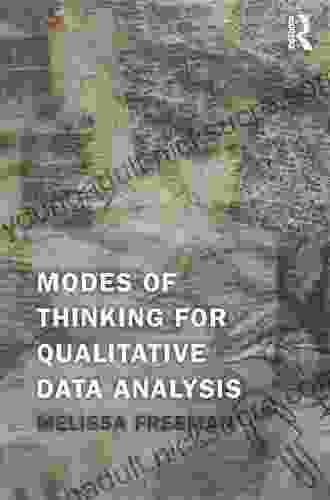
 Shane Blair
Shane BlairModes of Thinking for Qualitative Data Analysis
Qualitative data analysis is a complex...
4.4 out of 5
| Language | : | English |
| File size | : | 2120 KB |
| Text-to-Speech | : | Enabled |
| Screen Reader | : | Supported |
| Enhanced typesetting | : | Enabled |
| Word Wise | : | Enabled |
| Print length | : | 146 pages |


